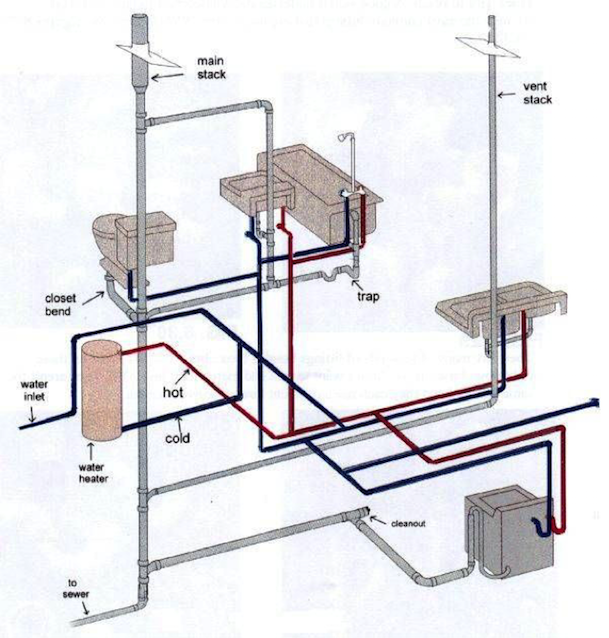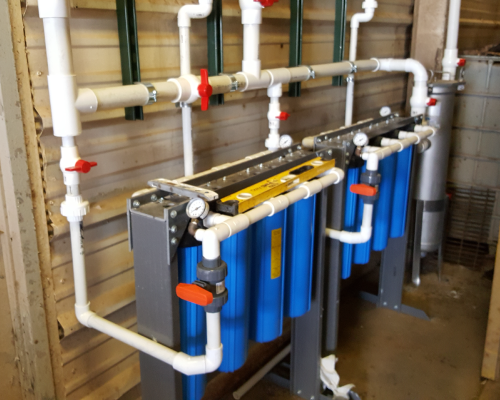Structure of Your Home's Plumbing System: What It Matters
Structure of Your Home's Plumbing System: What It Matters
Blog Article
Listed here in the next paragraphs you can get lots of excellent help and advice regarding Plumbing Installation 101: All You Need to Know.

Comprehending just how your home's plumbing system functions is important for every house owner. From delivering clean water for alcohol consumption, food preparation, and bathing to safely removing wastewater, a well-kept pipes system is crucial for your family members's health and wellness and convenience. In this extensive guide, we'll discover the complex network that composes your home's plumbing and offer suggestions on upkeep, upgrades, and dealing with typical problems.
Intro
Your home's pipes system is greater than simply a network of pipes; it's a complicated system that ensures you have access to clean water and effective wastewater removal. Understanding its parts and just how they collaborate can aid you protect against costly repairs and make certain every little thing runs efficiently.
Standard Elements of a Plumbing System
Pipes and Tubing
At the heart of your plumbing system are the pipelines and tubes that carry water throughout your home. These can be made of numerous products such as copper, PVC, or PEX, each with its benefits in regards to toughness and cost-effectiveness.
Components: Sinks, Toilets, Showers, and so on.
Components like sinks, bathrooms, showers, and tubs are where water is made use of in your house. Comprehending exactly how these fixtures attach to the pipes system assists in diagnosing problems and intending upgrades.
Shutoffs and Shut-off Points
Valves regulate the flow of water in your plumbing system. Shut-off shutoffs are vital throughout emergencies or when you need to make fixings, enabling you to isolate parts of the system without interrupting water circulation to the whole residence.
Water System System
Key Water Line
The major water line links your home to the community water system or an exclusive well. It's where water enters your home and is distributed to numerous components.
Water Meter and Stress Regulatory Authority
The water meter procedures your water use, while a pressure regulator makes certain that water moves at a secure stress throughout your home's plumbing system, preventing damages to pipelines and fixtures.
Cold Water vs. Warm water Lines
Understanding the difference between cold water lines, which supply water straight from the primary, and hot water lines, which lug warmed water from the hot water heater, helps in repairing and preparing for upgrades.
Drainage System
Drain Pipes Water Lines and Traps
Drain pipes lug wastewater far from sinks, showers, and bathrooms to the sewage system or septic system. Traps protect against drain gases from entering your home and also catch debris that might cause clogs.
Air flow Pipes
Air flow pipes permit air right into the drainage system, preventing suction that might reduce drain and create catches to empty. Correct ventilation is necessary for maintaining the honesty of your plumbing system.
Value of Appropriate Water Drainage
Guaranteeing correct drainage stops back-ups and water damage. Routinely cleansing drains and preserving catches can avoid expensive repairs and prolong the life of your plumbing system.
Water Heating Unit
Sorts Of Water Heaters
Water heaters can be tankless or standard tank-style. Tankless heating systems heat water on demand, while tanks keep warmed water for prompt use.
Upgrading Your Pipes System
Factors for Updating
Updating to water-efficient components or replacing old pipes can enhance water high quality, lower water costs, and raise the value of your home.
Modern Plumbing Technologies and Their Benefits
Discover modern technologies like smart leak detectors, water-saving bathrooms, and energy-efficient water heaters that can save cash and decrease ecological influence.
Price Factors To Consider and ROI
Calculate the ahead of time costs versus long-term financial savings when thinking about pipes upgrades. Numerous upgrades pay for themselves through minimized energy costs and less repairs.
Just How Water Heaters Connect to the Plumbing System
Understanding exactly how water heaters attach to both the cold water supply and warm water circulation lines helps in diagnosing issues like inadequate hot water or leaks.
Maintenance Tips for Water Heaters
Frequently flushing your water heater to eliminate sediment, checking the temperature setups, and evaluating for leakages can expand its life-span and boost power effectiveness.
Typical Pipes Concerns
Leakages and Their Reasons
Leaks can occur due to aging pipes, loose fittings, or high water stress. Addressing leakages without delay protects against water damages and mold and mildew growth.
Clogs and Blockages
Obstructions in drains pipes and bathrooms are commonly triggered by flushing non-flushable things or a build-up of oil and hair. Utilizing drain displays and bearing in mind what decreases your drains can protect against obstructions.
Indications of Plumbing Troubles to Expect
Low water stress, slow-moving drains, foul odors, or unusually high water bills are signs of possible plumbing issues that should be addressed without delay.
Plumbing Maintenance Tips
Normal Evaluations and Checks
Schedule yearly pipes evaluations to capture problems early. Look for indicators of leaks, deterioration, or mineral accumulation in faucets and showerheads.
Do It Yourself Maintenance Tasks
Easy jobs like cleansing tap aerators, checking for toilet leaks utilizing color tablets, or insulating exposed pipelines in chilly environments can protect against major plumbing issues.
When to Call an Expert Plumbing Technician
Know when a plumbing concern needs professional proficiency. Attempting complex repair services without appropriate knowledge can cause more damage and higher repair expenses.
Tips for Reducing Water Usage
Simple routines like repairing leakages without delay, taking shorter showers, and running complete loads of laundry and recipes can conserve water and lower your energy costs.
Eco-Friendly Plumbing Options
Think about lasting pipes materials like bamboo for flooring, which is durable and green, or recycled glass for countertops.
Emergency situation Preparedness
Steps to Take During a Pipes Emergency situation
Know where your shut-off valves lie and exactly how to turn off the water in case of a burst pipeline or major leak.
Significance of Having Emergency Situation Contacts Helpful
Keep contact info for regional plumbing professionals or emergency services easily offered for fast feedback throughout a pipes crisis.
Environmental Effect and Conservation
Water-Saving Components and Home Appliances
Mounting low-flow taps, showerheads, and commodes can dramatically decrease water usage without compromising performance.
DIY Emergency Fixes (When Appropriate).
Momentary repairs like making use of air duct tape to spot a dripping pipeline or putting a container under a leaking faucet can decrease damages up until an expert plumbing technician shows up.
Final thought.
Comprehending the composition of your home's pipes system empowers you to maintain it effectively, conserving money and time on fixings. By adhering to normal upkeep routines and staying informed concerning modern-day pipes innovations, you can guarantee your plumbing system runs effectively for many years to come.
Exploring Your Homes Plumbing Anatomy
Water Supply System
Main Water Line: This is where water enters your home from the municipal supply or a private well. Water Meter: Typically located near where the main water line enters the property, it measures the amount of water used. Shutoff Valve: It s crucial to know where this is in case of emergencies. It allows you to turn off the water supply to the entire house. Pipes and Fittings: These distribute water throughout your home. Materials can include copper, PVC, or PEX. Drain-Waste-Vent (DWV) System
Drains: Located in sinks, showers, and tubs, these carry wastewater away. Traps: U-shaped pipes under sinks that hold standing water, blocking sewer gases from entering the home. Vents: Pipes that lead from the DWV system to the outside, preventing vacuum formation and allowing gases to escape. Sewer Line: Carries all wastewater from the home to the municipal sewer system or a septic tank. Fixtures and Appliances
Sinks, Toilets, and Showers Dishwashers and Washing Machines Water Heaters Maintenance Tips
Regularly check for leaks in exposed pipes and around fixtures. Inspect the water heater annually for signs of wear. Clean drains and traps to prevent clogs and odors. Know how to shut off water to individual fixtures. When to Call a Professional
Major leaks or burst pipes Installation of new pipes or fixtures Septic tank issues Remodeling projects that involve plumbing changes Conclusion
Understanding the anatomy of your home's plumbing is key to maintaining a functional and efficient system. Regular checks and knowing when to call in the experts can save you time, money, and stress.
https://www.mavyn.com/blog/exploring-your-homes-plumbing-anatomy

I recently found that content about Plumbing Installation 101: All You Need to Know when perusing the search engines. Enjoyed reading our blog entry? Please share it. Let someone else check it out. Thank you so much for going through it.
Prices & Booking Report this page